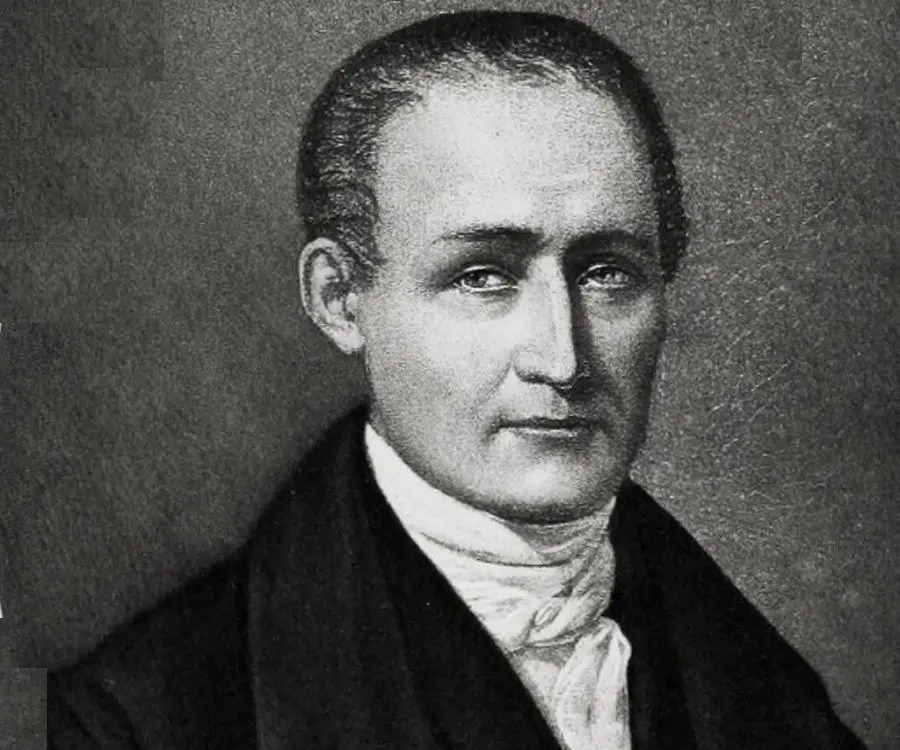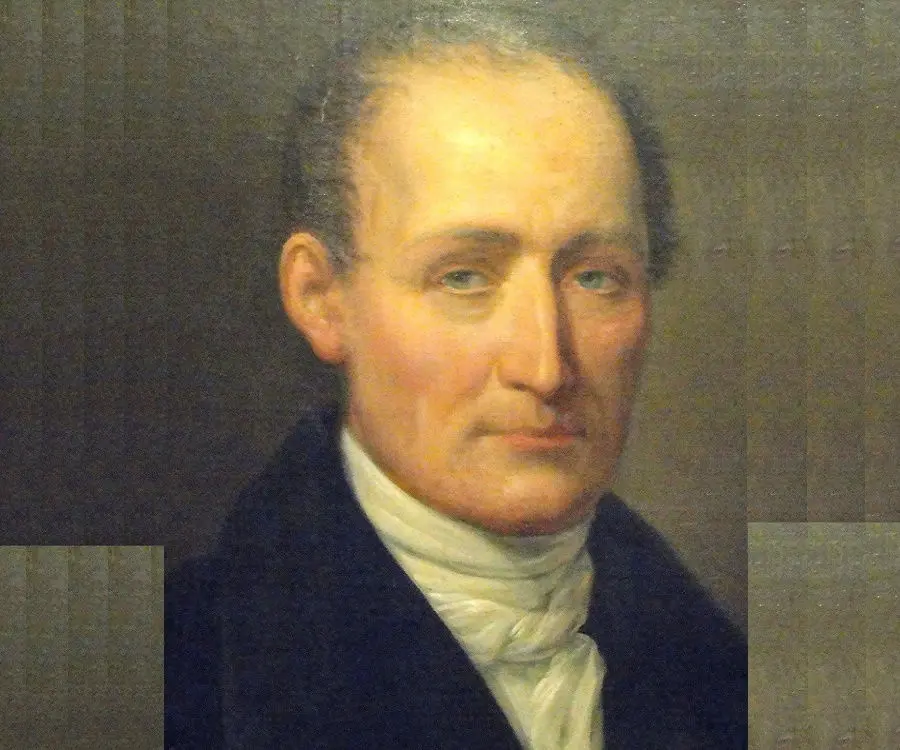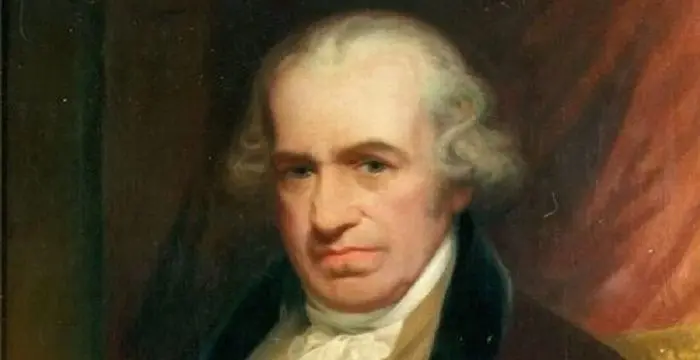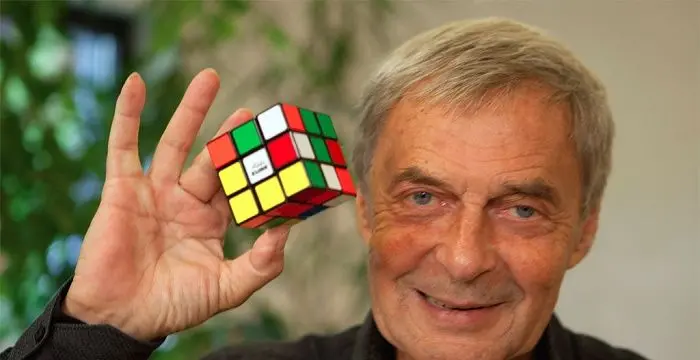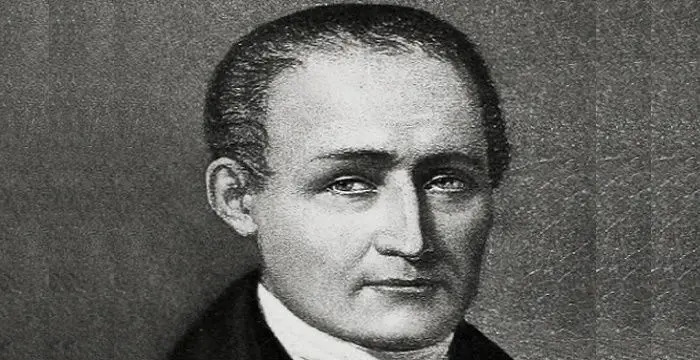
Nicéphore Niépce - Creator of World's First Permanent Photographic Image, Life Achievements and Family
Nicéphore Niépce's Personal Details
Nicéphore Niépce was a French inventor and photographer who is credited for creating the world's first permanent photographic image
| Information | Detail |
|---|---|
| Birthday | March 7, 1765 |
| Died on | July 5, 1833 |
| Nationality | French |
| Famous | Inventors & Discoverers, Photographers, Creator of World's First Permanent Photographic Image |
| Known as | Joseph Nicéphore Niépce |
| Childrens | Isidore Niépce |
| Birth Place | Chalon-sur-Saône |
| Gender | Male |
| Father | Claude Niépce |
| Mother | Claude Barault |
| Sun Sign | Pisces |
| Born in | Chalon-sur-Saône |
| Famous as | Creator of World's First Permanent Photographic Image |
| Died at Age | 68 |
Nicéphore Niépce's photo
Who is Nicéphore Niépce?
Nicéphore Niépce was a French inventor and photographer who is credited for creating the world's first permanent photographic image. For the majority of his career, he worked as part of the Niépce brothers along with his elder brother Claude, working primarily on the world's first internal combustion engine, the Pyréolophore, before shifting focus to photography. Interestingly, while he is now regarded as one of the pioneers in the field of photography, he had received little credit for his accomplishments during his lifetime. It was about two decades after his death that his procedure of using bitumen as a slow and cost effective way to create photoresist for printing plates became widely accepted. Following his death, much of the limelight was absorbed by his former partner, Louis Daguerre, who had created his own photographic process called 'daguerréotype', based on Niépce's original idea. Thankfully, later historians were able to trace back to his contributions with his 'heliography', and subsequently revived him from obscurity.
// Famous Photographers
Susan Mikula
Susan Mikula is an American artist and photographer. Check out this biography to know about her childhood, family life, achievements and fun factsabout her life.
Bryan Randall
Bryan Randall is an American professional photographer. Check out this biography to know about his family, personal life, relationships, etc.
Ansel Adams
Ansel Adams was a renowned American photographer and environmentalist. Check out this biography to know about his childhood, family life, achievements and other facts about his life.
Childhood & Early Life
Joseph Nicéphore Niépce was born on March 7, 1765 in Chalon-sur-Saône, Saône-et-Loire, to Claude Niépce, a King counselor and deposits collector for Chalonnais, and Claude Barault. His family, which also consisted of his older brother Claude, younger brother Bernard, and sister Claudine-Antoinette Niépce, had to flee the French Revolution due to suspicion of royalist sympathies.
In 1786, Joseph entered the Oratorian Brothers College in Angers to pursue his passion for physics and chemistry, and adopted the name 'Nicéphore' in honour of Saint Nicephorus, the ninth-century Patriarch of Constantinople. He achieved rapid success in studying science and the experimental method, and was appointed a professor at the college soon after completing his graduation.
Career
Nicéphore Niépce enlisted in the National Guard in Chalon-sur-Saône in 1788, but joined the Revolutionary Army as a staff officer under Napoleon in 1792, spending years in Italy and on the island of Sardinia. He had to leave the army in 1794 due to ill health and became the Administrator of the district of Nice, but was reportedly forced to resign the following year due to lack of popularity.
In 1797, he travelled to Sardinia with his family and his brother Claude, who had joined him in Nice, a trip which is believed to have inspired the two brothers to experiment with photography. They undertook their first projects as inventors back in Nice in 1798 and developed a new combustion engine based on the principle of air expansion during an explosion.
Along with his family and his brother, he returned to his homeland in 1801 to continue their scientific research and reunited with his mother, younger brother and sister. Taking charge of their family estates from their mother, who managed those since the death of their father in 1785, they began living independently as wealthy gentlemen-farmers, raising beets and producing sugar.
The Niépce brothers were the first to build and patent the world's first internal combustion engine, the Pyréolophore, in 1807, using controlled dust explosions of Lycopodium powder. The machine was first installed on a boat that ran on the river Saône, which was followed by another engine with a fuel injection system ten years later.
Entering a competition opened by the imperial government in 1807, the two brothers made improvements to the original Marly machine located in Marly-le-Roi to pump water from the Seine river to the Palace of Versailles. They made several changes to the model and were able to lift water 11 feet with a stream drop of 4 feet 4 inches, but in December 1809 the task was given to engineer Périer.
Nicéphore's interest in photography stemmed from his fascination with the new art of lithography and his lack of skills to pursue that, which prompted him to use the drawing aid of the camera obscura. Like Thomas Wedgwood and Henry Fox Talbot, he was also inspired by the 'light paintings' created by the camera obscura, and sought to develop a better way of capturing the images other than tracing over them.
The earliest references of him successfully capturing small camera images on paper coated with silver chloride comes from his letters to his sister-in-law in 1816, making him the first to achieve this. However, he could only capture 'negative' images which were dark in light portions and vice versa, and darkened all over when brought into light for viewing.
After experimenting with several substances that were affected by light, he concentrated focus on Bitumen of Judea, a naturally occurring asphalt which artists were using as an acid-resistant coating on copper plates for making etchings. Realizing that bitumen coating became less soluble after being exposed to light, he used solvent lavender oil to rinse unhardened parts that were shielded from light, exposing the base lithographic stone or metal plate.
Using this process of 'heliography' or 'sun drawing' as he called it, he made the world's first permanent photographic image, a contact-exposed copy of an engraving of Pope Pius VII, in 1822. However, the earliest surviving 'photocopies' are an engraving of a man with a horse and another of a woman with a spinning wheel, both of which were created by him in 1825.
According to letters he sent to his brother Claude, he first achieved success in creating a permanent photograph of an image by using bitumen coating and the camera obscura in 1824. After the first copy was effaced, he recreated that image of a view from his window on a sheet of bitumen-coated pewter in 1826-27, which is the oldest known camera photograph in existence.
Partnering with Louis Daguerre, he devised an improved process for creating permanent photographic images with a camera called 'physautotype', using lavender oil distillate as the photosensitive substance.
Following his death in 1833, Daguerre continued to improve the process and named it the 'daguerréotype', and was able to convince the French government of a yearly stipend, with a portion going to Niépce's estate.
Major Works
Nicéphore Niépce is credited as a pioneer in the field of photography for his invention of heliography using a camera obscura. In 1822, he used this process to create the world's first permanent photographic image, an engraving of Pope Pius VII.
Personal Life & Legacy
Nicéphore Niépce got married to Agnes Romero in 1794 during his stay in Nice. The couple had a son named Isidore who formed a partnership with Daguerre after his father's death.
Under financial difficulties, his brother Claude had traveled to Paris and then to England to raise money to extend the patent of the Pyréolophore, but ended up squandering much of the family fortune. Nicéphore visited him in London in 1827, one year before his death, only to find him in a state of delirium.
By the time Nicéphore died of a stroke on July 5, 1833 none of his inventions were officially acknowledged. He was so destitute at the time of his death that the municipality had to finance his grave in the cemetery of Saint-Loup de Varennes.
// Famous Inventors & Discoverers
Nikola Tesla
Nikola Tesla was a Serbian-American inventor, best known for his development of alternating current electrical systems. This biography of Nikola Tesla provides detailed information about his childhood, life, achievements, works & timeline.
Thomas Newcomen
Thomas Newcomen was a British inventor who developed the world’s first steam engine. Browse through this biography to learn in details about his life, career, works and timeline.
Erno Rubik
The famous inventor and educationist, Erno Rubik is known world-wide for his invention the ‘Rubik’s Cube’. To know more about the childhood, profile, timeline and career of this famous architect-inventor read on.
Nicéphore Niépce biography timelines
- // 7th Mar 1765Joseph Nicéphore Niépce was born on March 7, 1765 in Chalon-sur-Saône, Saône-et-Loire, to Claude Niépce, a King counselor and deposits collector for Chalonnais, and Claude Barault. His family, which also consisted of his older brother Claude, younger brother Bernard, and sister Claudine-Antoinette Niépce, had to flee the French Revolution due to suspicion of royalist sympathies.
- // 1785 To 1801Along with his family and his brother, he returned to his homeland in 1801 to continue their scientific research and reunited with his mother, younger brother and sister. Taking charge of their family estates from their mother, who managed those since the death of their father in 1785, they began living independently as wealthy gentlemen-farmers, raising beets and producing sugar.
- // 1786In 1786, Joseph entered the Oratorian Brothers College in Angers to pursue his passion for physics and chemistry, and adopted the name 'Nicéphore' in honour of Saint Nicephorus, the ninth-century Patriarch of Constantinople. He achieved rapid success in studying science and the experimental method, and was appointed a professor at the college soon after completing his graduation.
- // 1794Nicéphore Niépce got married to Agnes Romero in 1794 during his stay in Nice. The couple had a son named Isidore who formed a partnership with Daguerre after his father's death.
- // 1797 To 1798In 1797, he travelled to Sardinia with his family and his brother Claude, who had joined him in Nice, a trip which is believed to have inspired the two brothers to experiment with photography. They undertook their first projects as inventors back in Nice in 1798 and developed a new combustion engine based on the principle of air expansion during an explosion.
- // 1807The Niépce brothers were the first to build and patent the world's first internal combustion engine, the Pyréolophore, in 1807, using controlled dust explosions of Lycopodium powder. The machine was first installed on a boat that ran on the river Saône, which was followed by another engine with a fuel injection system ten years later.
- // 1807 To Dec 1809Entering a competition opened by the imperial government in 1807, the two brothers made improvements to the original Marly machine located in Marly-le-Roi to pump water from the Seine river to the Palace of Versailles. They made several changes to the model and were able to lift water 11 feet with a stream drop of 4 feet 4 inches, but in December 1809 the task was given to engineer Périer.
- // 1816The earliest references of him successfully capturing small camera images on paper coated with silver chloride comes from his letters to his sister-in-law in 1816, making him the first to achieve this. However, he could only capture 'negative' images which were dark in light portions and vice versa, and darkened all over when brought into light for viewing.
- // 1822 To 1825Using this process of 'heliography' or 'sun drawing' as he called it, he made the world's first permanent photographic image, a contact-exposed copy of an engraving of Pope Pius VII, in 1822. However, the earliest surviving 'photocopies' are an engraving of a man with a horse and another of a woman with a spinning wheel, both of which were created by him in 1825.
- // 1822Nicéphore Niépce is credited as a pioneer in the field of photography for his invention of heliography using a camera obscura. In 1822, he used this process to create the world's first permanent photographic image, an engraving of Pope Pius VII.
- // 1824 To 1826According to letters he sent to his brother Claude, he first achieved success in creating a permanent photograph of an image by using bitumen coating and the camera obscura in 1824. After the first copy was effaced, he recreated that image of a view from his window on a sheet of bitumen-coated pewter in 1826-27, which is the oldest known camera photograph in existence.
- // 1827Under financial difficulties, his brother Claude had traveled to Paris and then to England to raise money to extend the patent of the Pyréolophore, but ended up squandering much of the family fortune. Nicéphore visited him in London in 1827, one year before his death, only to find him in a state of delirium.
- // 1833Following his death in 1833, Daguerre continued to improve the process and named it the 'daguerréotype', and was able to convince the French government of a yearly stipend, with a portion going to Niépce's estate.
- // 5th Jul 1833By the time Nicéphore died of a stroke on July 5, 1833 none of his inventions were officially acknowledged. He was so destitute at the time of his death that the municipality had to finance his grave in the cemetery of Saint-Loup de Varennes.
// Famous Pisces Celebrities peoples
Christine Baumgartner
Christine Baumgartner is an American model and the wife of famous American actor Kevin Costner. Check out this biography to know about her birthday, childhood, family life, achievements and fun facts about her.
Galina Becker
Galina Becker is a former athlete and fitness model from America. Check out this biography to know about her birthday, childhood, family life, achievements and fun facts about her.
Nikkie De Jager
Check out all that you wanted to know about Nikkie De Jager, the famous Dutch Makeup artist; her birthday, her family and personal life, her boyfriends, fun trivia facts and more.
Annie Bakes
Annie Bakes is an American adult model and the ex-wife of Dennis Rodman. Check out this biography to know about her birthday, childhood, family life, achievements and fun facts about her.
Jordyn Jones
Jordyn Jones is an American dancer. Let’s have a look at her family & personal life including age, date of birth, boyfriends, net worth, and fun facts.
Oscar Rosenstroem
Oscar Rosenstroem is a Danish Musical.ly star. Let’s have a look at his family and personal life including age, date of birth, girlfriends, net worth and fun facts.
Nicéphore Niépce's FAQ
What is Nicéphore Niépce birthday?
Nicéphore Niépce was born at 1765-03-07
When was Nicéphore Niépce died?
Nicéphore Niépce was died at 1833-07-05
Where was Nicéphore Niépce died?
Nicéphore Niépce was died in Saint-Loup-de-Varennes
Which age was Nicéphore Niépce died?
Nicéphore Niépce was died at age 68
Where is Nicéphore Niépce's birth place?
Nicéphore Niépce was born in Chalon-sur-Saône
What is Nicéphore Niépce nationalities?
Nicéphore Niépce's nationalities is French
Who is Nicéphore Niépce childrens?
Nicéphore Niépce's childrens is Isidore Niépce
Who is Nicéphore Niépce's father?
Nicéphore Niépce's father is Claude Niépce
Who is Nicéphore Niépce's mother?
Nicéphore Niépce's mother is Claude Barault
What is Nicéphore Niépce's sun sign?
Nicéphore Niépce is Pisces
How famous is Nicéphore Niépce?
Nicéphore Niépce is famouse as Creator of World's First Permanent Photographic Image
